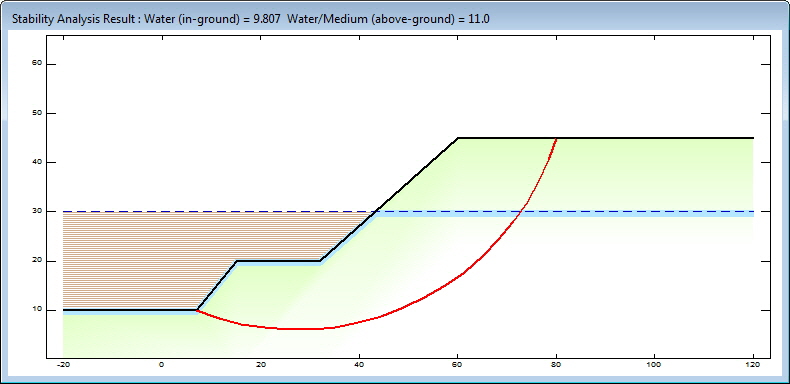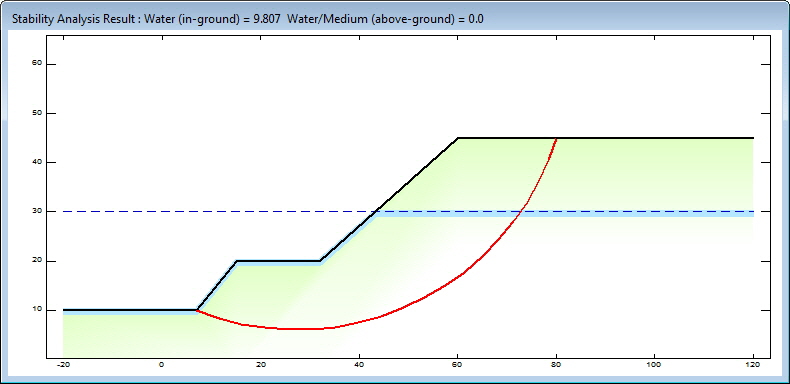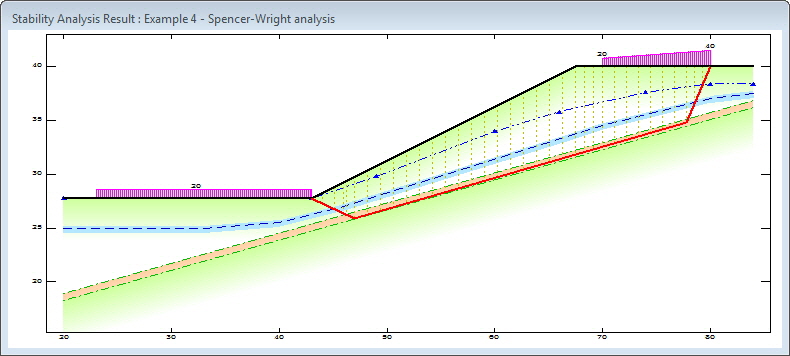|
Current version: |
|||||||||||||||
|
|
|||||||||||||||
 |
|||
|
Features - Water Definition, Pressures and Positions GALENA provides you with the tools to effectively consider ground water, the most important parameter affecting the stability of structures and excavations, and one that needs to be defined realistically for different problems. GALENA pioneered definition of water and denser-than-water mediums above ground, a must for tailings dam work. |
|
Phreatic surface definition in GALENA also provides a simple way of modelling a fully or partially saturated slope where the density of the medium-above-ground is simply defined as 0.0 (zero). These and other features are simply part of the way GALENA makes it easier for you. |
|
The images below show a simple homogeneous slope (one side of a bund, leveee or tailings/earthen dam), where three different situations are to be modelled:
The water conditions are modelled with a phreatic surface (shown as a blue dashed line) that defines the water level against the slope face and within the slope. In the first image (below) the blue hatching indicates water above the slope, and the blue colourbar co-incident with the slope surface and phreatic surface indicates water within the ground (saturated below those surfaces). |
|||
 |
|||
|
In the second image (below) the brown hatching indicates a medium above the slope that has a unit weight greater than that of water, and the blue colourbar co-incident with the slope surface and phreatic surface indicates water within the ground (saturated below those surfaces). |
|||
 |
|||
|
In the third image (below) the lack of any hatching indicates the area above the slope has a unit weight of 0.0 (air), and the blue colourbar co-incident with the slope surface and phreatic surface indicates water within the ground (saturated below those surfaces). |
|||
 |
|||
|
|
|||
|
The image below shows a slope with a dipping silty-sand layer (coloured orange) sandwiched between upper and lower clay layers (coloured green). The water conditions are modelled with a phreatic surface (shown as a blue dashed line) within the upper clay layer defining the free groundwater level, and a piezometric surface (shown as a blue dashed line with up-pointing triangles) defining a piezometric pressure head within the silty-sand layer. For this confined aquifer situation the pore-water pressures within the clay are determined from the phreatic surface, and within the silty-sand layer from the piezometric head. |
|||||
 |
|||||
|
|
